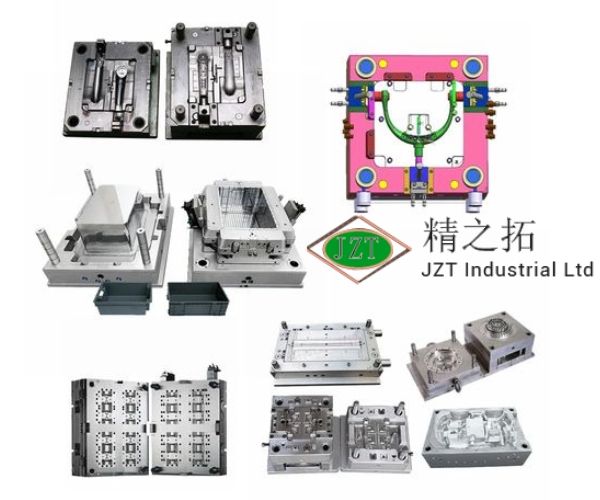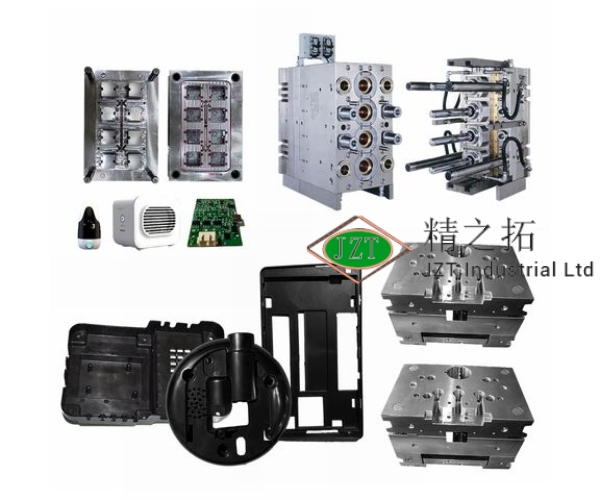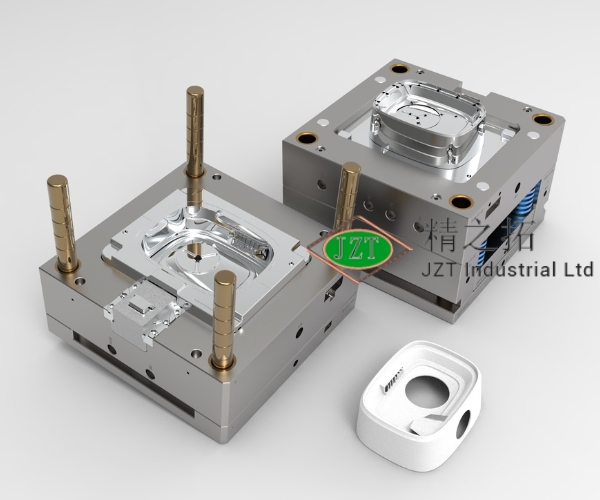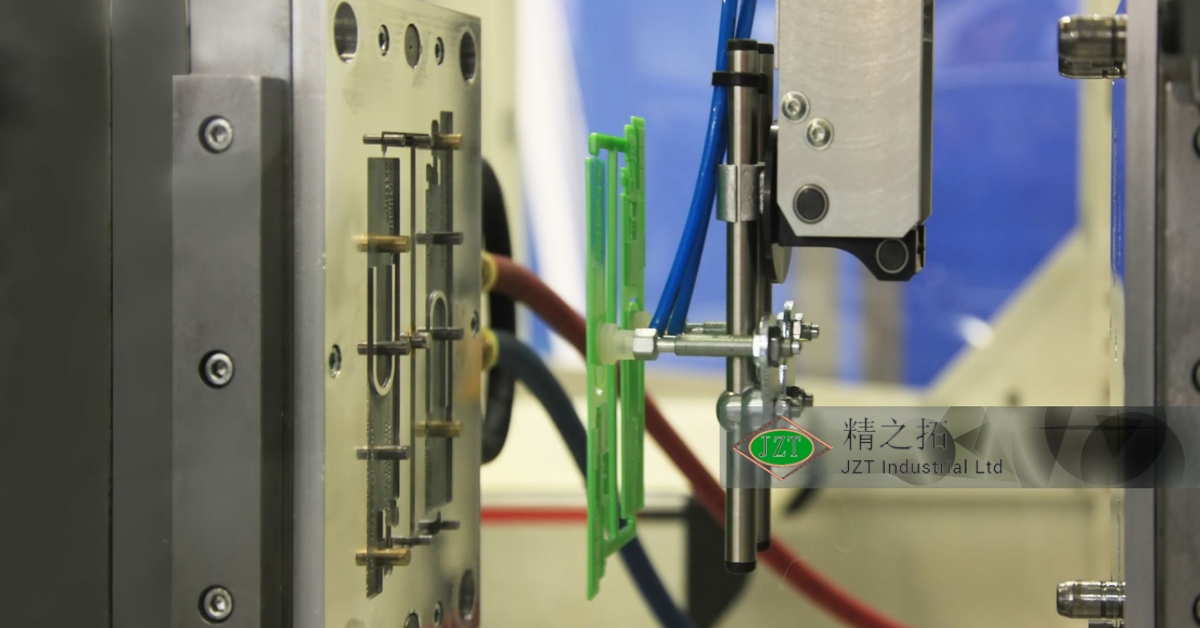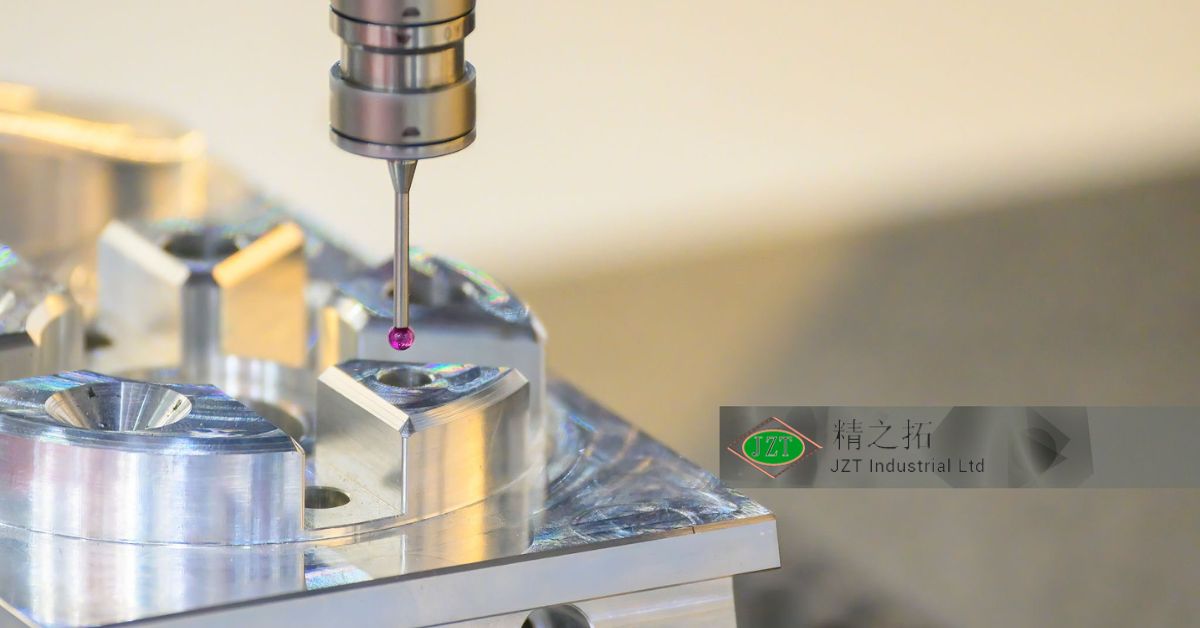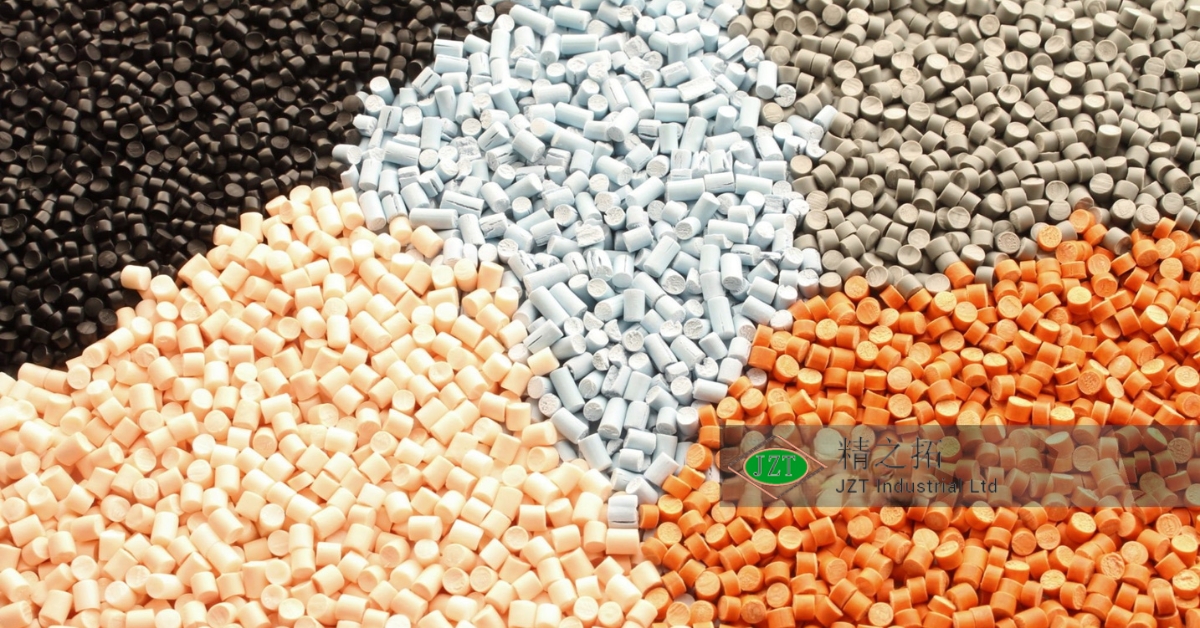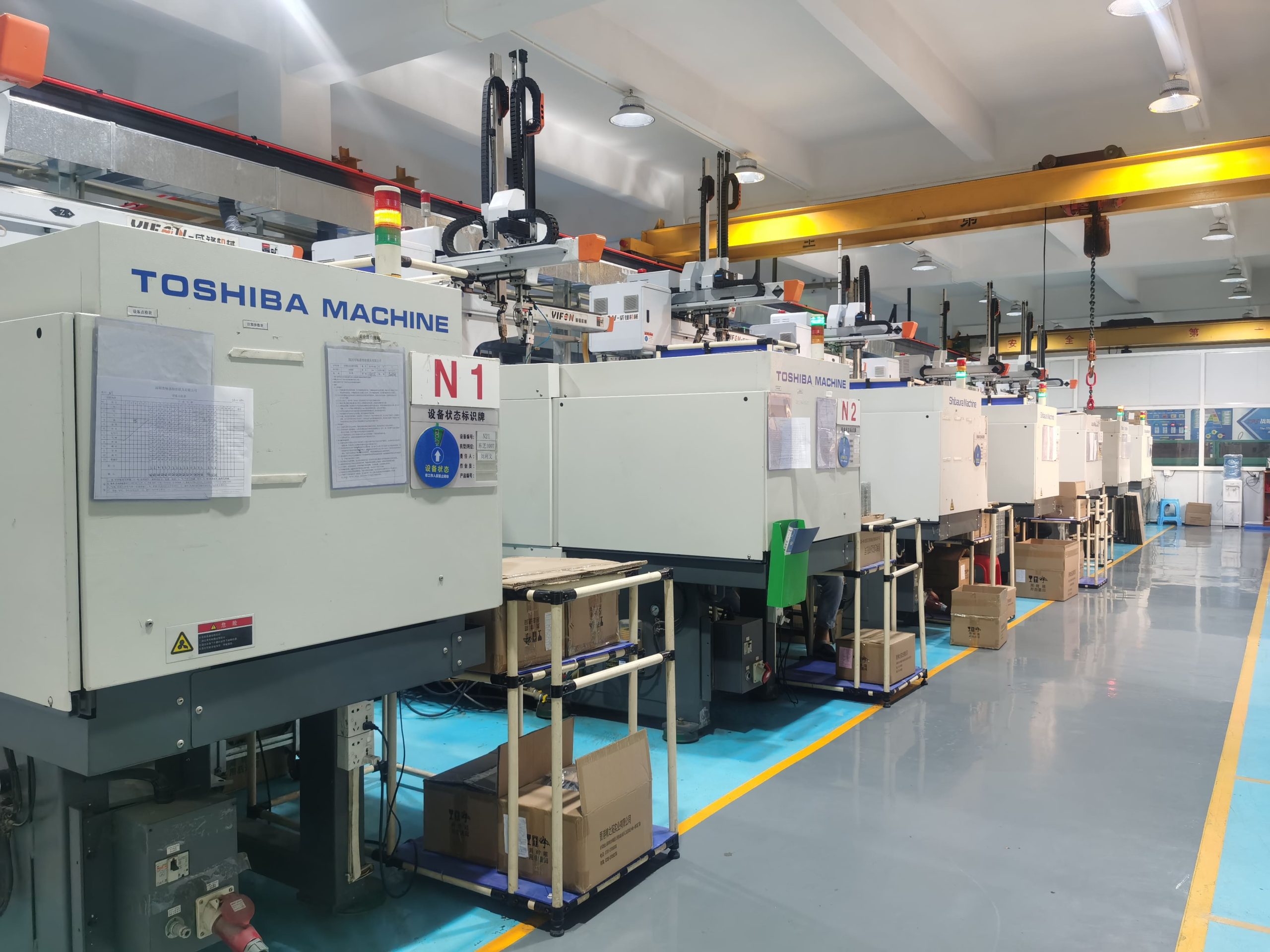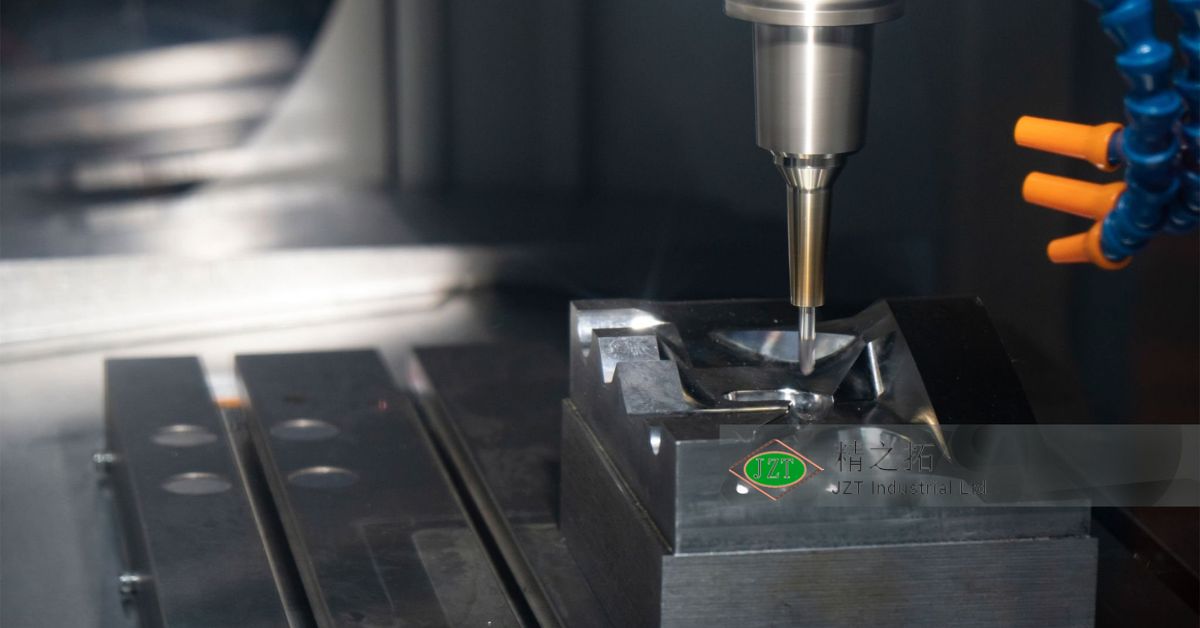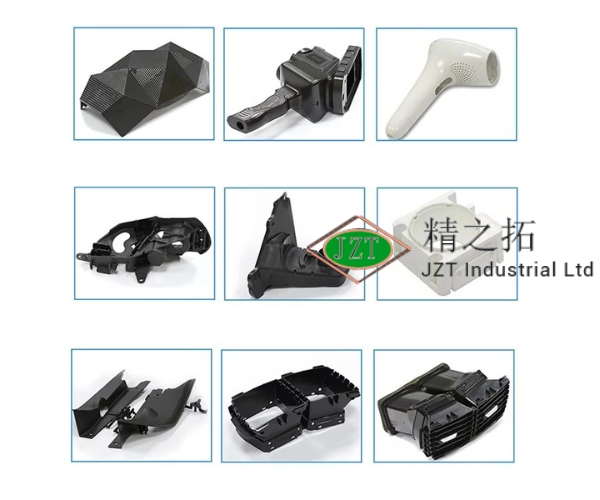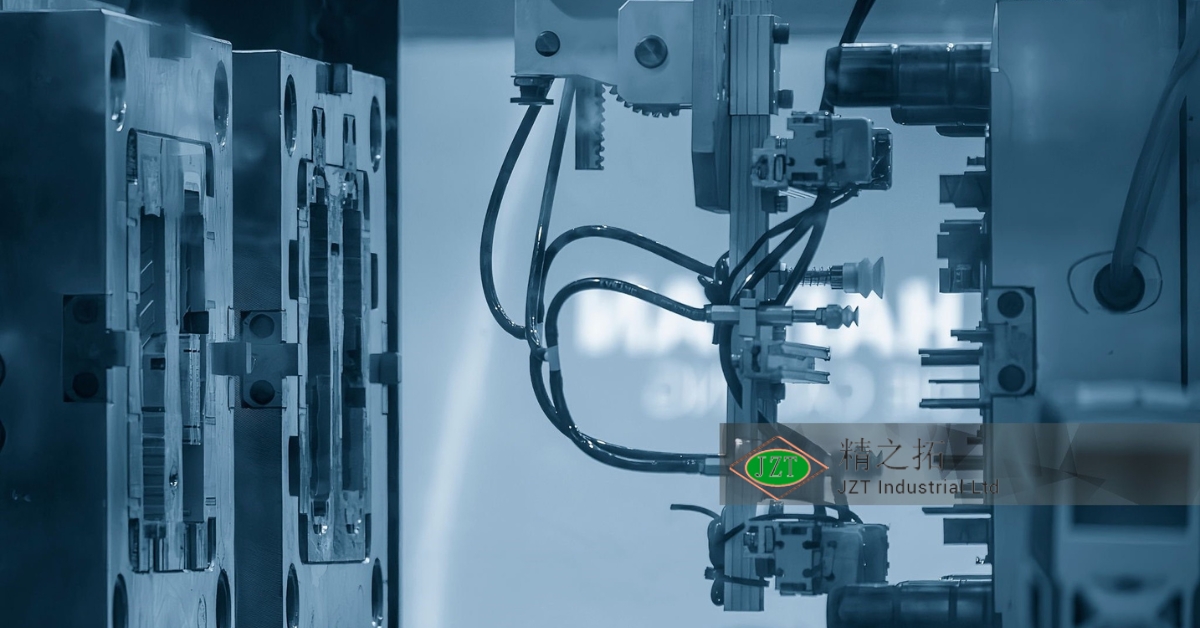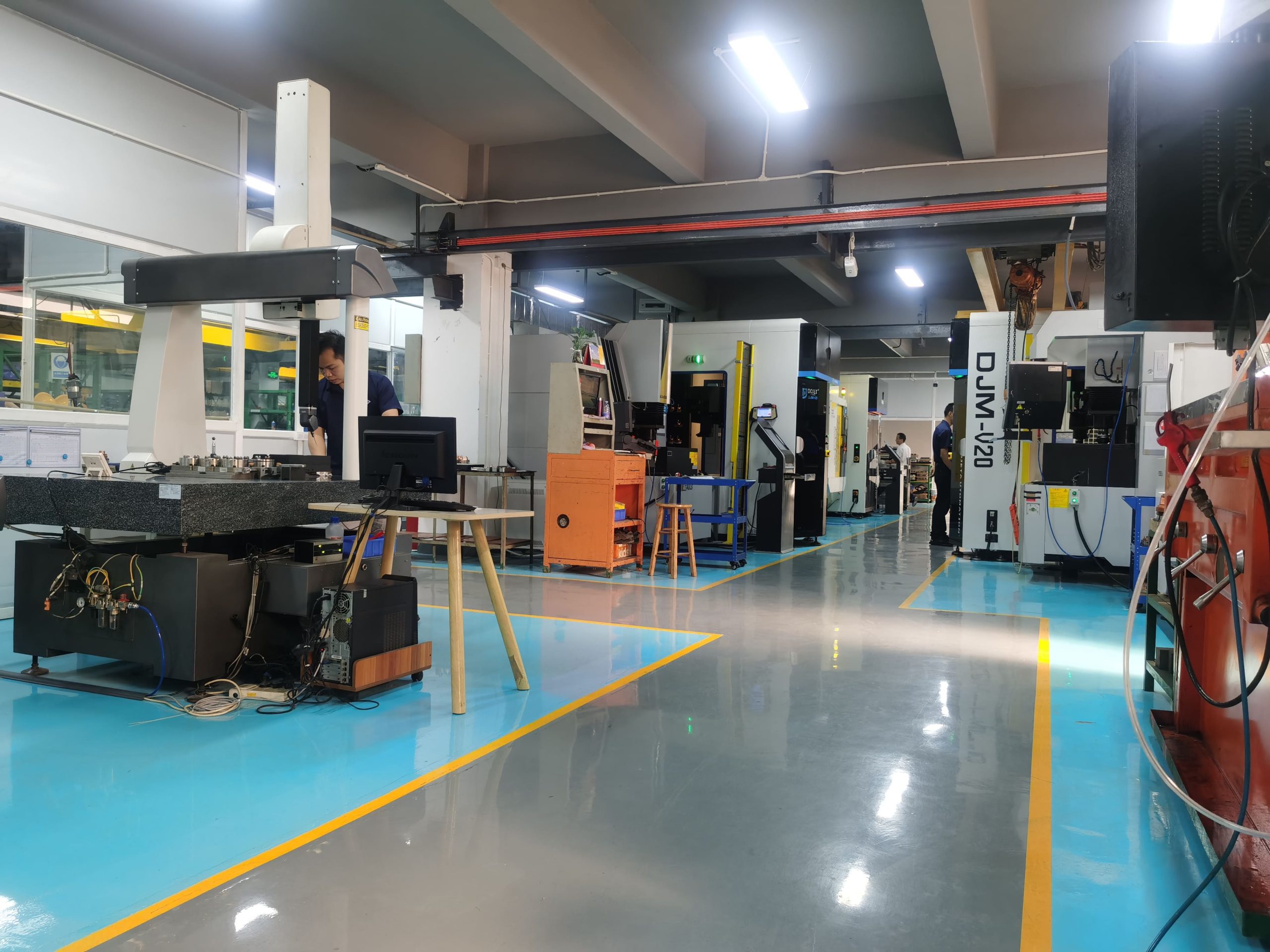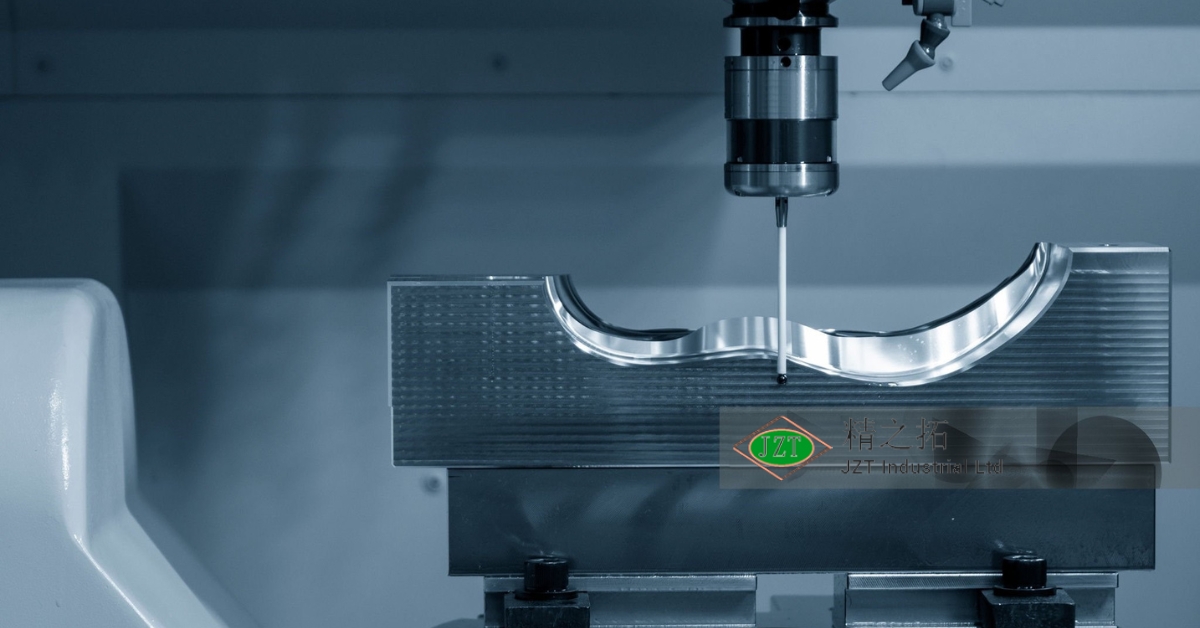소개
Reducing lead time in injection mold development is a priority for manufacturers aiming to stay competitive in today’s fast-paced production environment. Lead time, in this context, includes every step of the 플라스틱 사출 금형 process, from the initial design and prototyping phases to full-scale production. A streamlined approach to managing lead time not only shortens the overall project timeline but also lowers costs, improves resource utilization, and gets 맞춤형 플라스틱 부품 to market faster.
This article will explore five proven strategies to help 플라스틱 부품 제조업체 reduce lead time in injection mold development and production. These strategies include optimizing mold design, selecting suitable materials, utilizing rapid prototyping, leveraging automation, and enhancing communication with suppliers and partners. Each section will cover the steps and tools necessary for manufacturers to implement these strategies successfully, ensuring they can meet market demand with efficient, high-quality production.
Understanding the Factors that Affect Lead Time
Lead time in injection mold development is affected by multiple variables, all of which must be carefully managed to achieve faster production without compromising quality. Understanding these factors can help manufacturers identify the areas most in need of optimization.
금형 설계 복잡성
The complexity of the mold design directly impacts lead time. Molds with intricate geometries, multiple cavities, or complex details require more time to design, prototype, and produce. While a complex design may be necessary for the functionality of the part, overcomplicating the design can unnecessarily increase lead time. Simplifying the geometry where possible and working with experienced designers to create efficient, optimized molds can make a significant difference.
Material Selection and Availability
Choosing the right material is essential for quality, but it also affects lead time. Some materials require longer processing times, specific temperatures, or unique handling conditions, all of which add to the production timeline. Availability is another consideration; materials that are difficult to source or are prone to supply chain disruptions can delay the entire project. Selecting readily available materials compatible with the mold design is crucial for minimizing delays.
Prototype and Testing Phases
Prototyping and testing are crucial steps in the mold development process, but they can also extend lead time, especially if multiple iterations are needed. While testing is necessary to ensure the mold’s accuracy and functionality, testing earlier and more frequently can reduce the likelihood of extensive rework later in the process. 신속한 프로토타입 제작 and virtual simulations can help manufacturers identify design flaws early, reducing the need for multiple physical iterations and saving time.
생산량
The volume of parts required influences lead time in terms of both mold design and production scheduling. High-volume orders may necessitate multi-cavity molds or advanced cooling systems to meet demand, while smaller orders may not justify such complexity. Balancing production volume needs with the mold design and manufacturing process can help manufacturers maintain efficiency and reduce lead time.
Supplier and Manufacturing Partner Collaboration
Clear and proactive communication with suppliers and manufacturing partners is essential for avoiding delays. Misunderstandings about specifications, material availability, or project timelines can slow down production. Collaborative project management, regular check-ins, and using tools for transparent communication ensure that all stakeholders are aligned and can act quickly to address any issues that arise.
Strategy #1: Streamline Mold Design and Engineering
One of the most effective ways to reduce lead time in injection mold development is by optimizing the mold design and engineering phase. A well-designed mold is key to producing 맞춤형 플라스틱 부품 efficiently and with minimal defects. Streamlining this process means creating a mold design that is functional, efficient, and free of unnecessary complexity.
Simplifying Mold Geometry
The geometry of a mold directly affects production time. Complex shapes with intricate details, sharp undercuts, or deep cavities require more precise machining and longer cycle times, adding to the lead time. Simplifying the mold design without sacrificing functionality can reduce both production time and costs. For example, using fewer but strategically placed gates can facilitate better material flow, minimizing defects and reducing cycle time.
Working closely with experienced engineers who understand the intricacies of mold design is essential. By simplifying geometry and using design techniques that enhance the mold’s manufacturability, manufacturers can reduce development time while still meeting the part’s functional requirements.
Standardized Components
Using standardized components in mold design can significantly reduce lead time. Off-the-shelf mold components such as mold bases, guide pins, and ejector pins are readily available, making it faster and easier to source these parts than custom-manufacturing them. Additionally, standardized components simplify the mold assembly process, making it easier to maintain and repair molds, which further speeds up production.
With standardized components, manufacturers can create molds faster without compromising quality. This approach not only cuts down on sourcing time but also improves consistency and reliability across multiple production runs.
Modular Mold Design
Modular mold designs provide additional flexibility and speed in the production process, particularly for projects requiring multiple variations of the same part. A modular mold consists of a base with interchangeable inserts that can produce different part designs using the same base structure. This flexibility allows manufacturers to quickly switch between product variations, reducing downtime and lead time.
Modular molds are especially useful for 플라스틱 부품 제조업체 who need to produce multiple versions of a product for different markets or applications. Instead of creating a new mold for each variant, modular mold inserts can be swapped out easily, enabling manufacturers to meet diverse customer demands without sacrificing efficiency.
CAD and Mold Flow Analysis
Computer-aided design (CAD) and 금형 흐름 분석 are indispensable tools for optimizing mold design. CAD software enables engineers to design and visualize molds with extreme precision, while mold flow analysis simulates how molten plastic will flow through the mold. By analyzing flow dynamics, engineers can identify potential issues, such as air traps or weld lines, before the mold is built, reducing the need for costly and time-consuming redesigns.
Mold flow analysis is particularly valuable for complex molds, as it provides insights into material flow, cooling patterns, and potential stress points. This proactive approach allows for design adjustments early in the process, minimizing lead time by reducing the need for physical testing and revisions.
Concurrent Engineering
Concurrent engineering involves working on different aspects of the mold design and production process simultaneously, rather than sequentially. For example, while the mold design is being finalized, material selection and testing can proceed in parallel. This approach accelerates development by allowing multiple tasks to be completed at once, rather than waiting for each stage to finish before moving on to the next.
By adopting concurrent engineering practices, manufacturers can shorten the overall timeline, reduce bottlenecks, and ensure that all aspects of the project are aligned and moving forward simultaneously. This strategy is especially effective when paired with clear communication and collaboration between teams.
Strategy #2: Choose the Right Materials and Ensure Their Availability
Selecting the right material for 플라스틱 사출 금형 is crucial not only for quality but also for reducing lead time. Material selection affects the mold’s functionality, durability, and production speed, making it essential to choose materials that meet the project’s needs without causing delays.
Material Selection for Faster Processing
Materials vary in their processing requirements, and certain materials are faster and easier to work with than others. When lead time is a priority, selecting materials that require shorter cycle times, lower temperatures, or less complex handling can significantly reduce production time. For instance, choosing a material with high flowability can speed up the molding process by ensuring even and efficient filling of the mold.
By working with materials that are easier to process and compatible with the desired end-product characteristics, manufacturers can achieve faster production without sacrificing part quality.
Collaborating with Material Suppliers
Working closely with material suppliers is essential for avoiding delays caused by material shortages or late deliveries. By establishing strong relationships with suppliers and maintaining clear communication about project timelines, manufacturers can ensure that materials arrive on schedule, reducing the risk of interruptions.
Additionally, communicating specific material requirements early on allows suppliers to anticipate and prepare for the order, ensuring that the necessary materials are available when needed. In situations where lead time is critical, collaborating with a supplier who understands your project needs can make a significant difference.
Bulk Purchasing and Material Stocking
For high-volume projects or ongoing production needs, bulk purchasing or stocking materials in advance can help prevent delays. By keeping a ready inventory of commonly used materials, manufacturers can avoid delays caused by sourcing or shipping issues. This approach is particularly valuable for 맞춤형 플라스틱 부품 that require specialized materials that may not be readily available on short notice.
While bulk purchasing requires an upfront investment, it can pay off in the long run by reducing lead time and ensuring that production schedules stay on track.
Material Compatibility Testing
Ensuring that the chosen materials are compatible with the mold and production process is essential for avoiding delays. Material compatibility testing should be conducted early in the project to identify any potential issues with the material’s behavior, such as shrinkage, warping, or bonding problems. Identifying these issues in advance allows manufacturers to address them before production begins, reducing the risk of costly delays.
Recyclable and Sustainable Materials
Sustainability is becoming an important consideration in injection mold development. Choosing recyclable or sustainable materials not only supports environmental goals but can also reduce lead time by making materials easier to handle, recycle, and reintroduce into the production cycle. By using sustainable materials, manufacturers can improve production efficiency and minimize waste, further supporting faster and more eco-friendly production.
Strategy #3: Implement Rapid Prototyping and Testing
신속한 프로토타입 제작 allows manufacturers to test and validate mold designs quickly, reducing the need for multiple design iterations and minimizing lead time. By identifying design flaws or compatibility issues early, rapid prototyping helps manufacturers make informed adjustments, ensuring that the final mold is optimized for efficiency.
3D Printing for Fast Prototyping
3D 프린팅 is one of the most popular rapid prototyping methods, offering a fast and cost-effective way to produce initial prototypes for fit and form testing. By creating physical models quickly, manufacturers can evaluate the design’s accuracy and functionality, identify any adjustments needed, and prevent delays in the mold production phase.
3D printing is particularly valuable for 맞춤형 플라스틱 부품, as it enables manufacturers to explore various design options and make modifications without the need for full-scale molds. This reduces the time and cost associated with traditional prototyping, helping manufacturers move through the development phase more quickly.
Injection Molded Prototypes for Realistic Testing
While 3D-printed prototypes are ideal for initial testing, injection-molded prototypes are often used for more accurate assessments. These prototypes provide a realistic representation of the final part’s properties, allowing manufacturers to test the mold’s functionality and quality under real production conditions. By validating the design through injection-molded prototypes, manufacturers can reduce the risk of defects or performance issues, ultimately saving time and resources.
Virtual Testing with Simulation Software
Virtual simulation is an effective way to test mold designs before creating physical prototypes. Advanced simulation tools allow manufacturers to analyze how the mold will perform under specific conditions, predicting potential issues such as warping, sink marks, and flow patterns. By running simulations, manufacturers can identify and address design flaws early in the process, minimizing the need for costly physical tests.
Virtual testing is particularly useful for complex molds, as it provides valuable insights into material behavior and cooling dynamics. This enables manufacturers to make precise adjustments that reduce lead time by preventing rework and optimizing the mold from the outset.
Mold Flow Analysis for Defect Prevention
금형 흐름 분석 is a specialized simulation that predicts how molten plastic will move through the mold. By understanding flow patterns, manufacturers can identify areas where defects are likely to occur, such as weld lines or air traps. Addressing these issues in the design phase reduces the need for later modifications, helping manufacturers achieve higher quality and faster production times.
Early and Frequent Testing Cycles
Testing early and frequently during the mold development process allows manufacturers to catch issues before they escalate. By incorporating feedback at each stage of development, manufacturers can make incremental adjustments that lead to a more refined final product. This approach reduces the risk of major revisions, helping manufacturers maintain a steady and efficient production schedule.
Strategy #4: Leverage Automation and Advanced Manufacturing Technologies
자동화와 첨단 기술이 변화시켰습니다. injection mold development process, enabling faster production, higher precision, and lower defect rates. Leveraging these technologies helps manufacturers improve efficiency and reduce lead time.
Automated CNC Machining for Mold Fabrication
Automated CNC machining is used to fabricate molds with precision and speed. Automated CNC machines are programmed to follow exact specifications, ensuring that each mold component is produced accurately without manual intervention. This reduces machining time and improves consistency, leading to faster lead times and high-quality molds.
Use of Robotics for Material Handling
로봇 시스템 streamline material handling, improving both speed and accuracy in the production process. Robots are used to load and unload materials, transfer components between stages, and inspect finished parts. By automating these tasks, manufacturers reduce the risk of human error, speed up production, and maintain consistent quality across runs.
Real-Time Monitoring and Quality Control
Implementing real-time monitoring allows manufacturers to detect issues early in the production process. Sensors and automated quality control systems continuously track temperature, pressure, and other critical parameters, allowing for instant adjustments to prevent defects. By maintaining stable production conditions, manufacturers can avoid downtime and rework, reducing lead time.
IoT and Data Analytics for Process Optimization
사물인터넷(IoT) sensors and data analytics provide insights into the efficiency and performance of the injection molding process. By analyzing data in real time, manufacturers can identify bottlenecks, optimize cycle times, and reduce downtime. Predictive analytics also help anticipate maintenance needs, ensuring that equipment runs efficiently without unexpected interruptions.
Automation in Post-Production Processes
Automation extends beyond molding into post-production stages, including trimming, finishing, and assembly. Automated trimming and finishing systems reduce the need for manual labor, while robotic assembly systems speed up product completion. By automating these processes, manufacturers can further shorten lead times and increase overall production efficiency.
Strategy #5: Optimize Communication and Project Management with Suppliers and Partners
Effective communication and project management are essential for keeping injection mold development on schedule. Clear communication with suppliers, stakeholders, and partners ensures that everyone is aligned on project goals, timelines, and requirements, reducing the likelihood of delays.
Establishing Clear Communication Channels
Clear communication channels with suppliers and partners prevent misunderstandings that can lead to delays. By setting up designated contacts and regular updates, manufacturers can ensure that everyone involved has the information they need to keep the project moving smoothly.
Collaborative Project Management Tools
Project management tools enable seamless communication and collaboration across teams. Using platforms like Asana, Trello, or Microsoft Project, manufacturers can track progress, share updates, and address potential issues in real time. This transparency helps keep everyone aligned and minimizes the risk of delays caused by miscommunication.
Defining Project Milestones and Timelines
Setting specific project milestones and timelines helps keep development on track. Milestones provide measurable goals for each phase of the project, allowing teams to monitor progress and identify potential delays early. By defining clear timelines, manufacturers can ensure that every step is completed on schedule, reducing lead time.
Regular Check-Ins and Progress Reviews
Conducting regular check-ins with suppliers, partners, and team members ensures that any issues are identified and resolved promptly. These meetings help keep the project on track and allow for proactive adjustments to the schedule as needed, preventing minor delays from escalating into significant setbacks.
Agile Project Management in Manufacturing
Agile project management principles, which emphasize flexibility and responsiveness, are highly effective for injection mold development. Agile methodologies encourage iterative progress, allowing teams to adapt to changes in design or requirements quickly. This approach helps reduce lead time by allowing manufacturers to respond to feedback and refine processes efficiently.
Additional Tips to Reduce Lead Time in Injection Mold Development
Beyond the primary strategies, there are additional methods for improving efficiency and reducing lead time:
- Early Supplier Involvement (ESI): Engaging suppliers early in the project ensures they understand material requirements and timelines, helping prevent delays in sourcing.
- Design for Manufacturability (DFM) Practices: Using DFM principles during mold design reduces complexity and improves the mold’s manufacturability.
- Flexible and Scalable Manufacturing Systems: Choosing scalable systems allows manufacturers to respond quickly to changes in demand, minimizing downtime.
- Advanced Quality Control Techniques: Implementing quality checks at every stage prevents defects from progressing, ensuring a streamlined production process.
- Predictive Maintenance for Equipment: Using predictive maintenance strategies keeps equipment in optimal condition, preventing unexpected breakdowns that can disrupt production schedules.
결론
Reducing lead time in injection mold development is essential for staying competitive in today’s manufacturing landscape. By streamlining mold design, selecting suitable materials, leveraging rapid prototyping, implementing automation, and enhancing communication, 플라스틱 부품 제조업체 can achieve faster, more efficient production processes. These strategies not only reduce time-to-market but also lower costs and improve overall production quality.
The strategies outlined in this article offer manufacturers actionable steps to minimize lead time and improve efficiency, ultimately leading to better outcomes for customers and businesses alike. By continuously optimizing their processes and adopting these best practices, manufacturers can maintain a competitive edge and meet the growing demand for high-quality, 맞춤형 플라스틱 부품.
자주 묻는 질문
How can lead time in injection mold development impact overall project costs?
Shorter lead times reduce labor costs, minimize resource use, and accelerate product delivery, all of which contribute to lower project costs. Delays, on the other hand, increase expenses due to prolonged use of resources and extended timelines.
What is the role of automation in reducing lead time for injection molding?
Automation enhances precision, reduces human error, and speeds up both production and post-production processes. By using automated systems, manufacturers achieve higher consistency, faster cycle times, and streamlined workflows.
How does rapid prototyping contribute to lead time reduction?
Rapid prototyping allows for quick validation of mold designs, reducing the need for extensive physical testing and revisions. Techniques like 3D printing enable early detection of design flaws, leading to faster design finalization.
Why is material selection important for minimizing lead time?
Selecting the right materials can prevent processing delays, ensure smoother production, and avoid issues like warping or shrinkage that can extend lead time. Working with easily sourced, compatible materials is essential for efficient production.
How can clear communication with suppliers reduce lead time in mold production?
Clear communication ensures suppliers understand timelines, material requirements, and project milestones, reducing the risk of misunderstandings and delays. Collaborative planning with suppliers helps avoid sourcing issues and keeps production on schedule.

